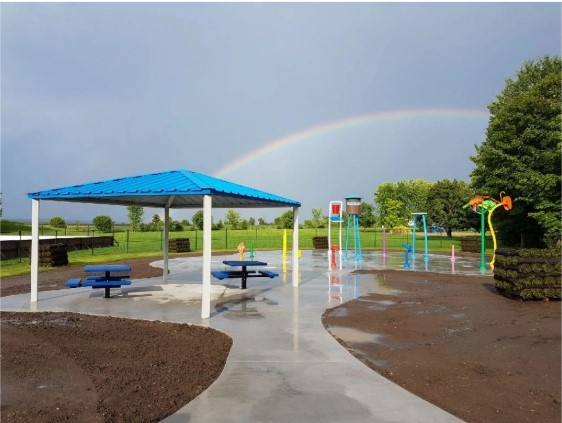Shade structures are essential features in outdoor environments, protecting from harsh sun, UV rays, and unpredictable weather conditions. From parks and playgrounds to commercial spaces and residential backyards, shade structures enhance comfort, extend the usability of outdoor areas, and add aesthetic appeal. This article explores their types, benefits, materials, and key considerations when selecting or installing a shade structure.
What is a Shade Structure?
A shade structure is an architectural element designed to block direct sunlight and reduce heat exposure in outdoor spaces. It can be permanent or temporary and is engineered to withstand environmental stresses such as wind, rain, and UV degradation. Shade structures vary in design, including canopies, sails, pergolas, gazebos, and umbrellas, each serving specific functional and visual purposes.
Types of Shade Structures
- Shade Sails
- Made from durable, UV-resistant fabric stretched between anchor points.
- Modern and stylish, ideal for playgrounds, patios, schools, and commercial courtyards.
- Allow airflow while blocking up to 95% of UV rays.
- Cantilever Structures
- Feature support columns on one side, providing unobstructed shaded space underneath.
- Commonly used in seating areas, car parks, and pools.
- Canopies
- Fabric or metal structures with frames, offering versatile shade options.
- Available in freestanding or attached designs for building entrances, walkways, and picnic areas.
- Pergolas
- Open-roof structures with beams, often integrated with retractable shades or climbing plants.
- Popular for residential patios and outdoor dining areas, blending functionality with aesthetics.
- Gazebos and Pavilions
- Permanent, roofed structures providing full shade and weather protection.
- Ideal for parks, community centers, and event spaces.
- Umbrellas
- Portable and adjustable, suitable for cafes, restaurants, and backyard seating areas.
- Easy to set up and relocate as needed.
Materials Used in Shade Structures
- Fabric
- High-density polyethylene (HDPE) is commonly used for shade sails due to UV resistance and breathability.
- PVC-coated polyester fabrics offer waterproofing for canopies and permanent structures.
- Metal
- Steel and aluminum frames provide strength and longevity, with powder coatings for corrosion resistance.
- Wood
- Used mainly in pergolas and gazebos, offering a natural, aesthetic appeal but requiring regular maintenance.
- Polycarbonate Panels
- Often used for pergolas or cantilever roofs to block UV rays while allowing light transmission.
Benefits of Installing Shade Structures
- Protection from UV Rays
- Shade structures reduce direct exposure to harmful UV rays, preventing sunburn and lowering skin cancer risks.
- Temperature Control
- They significantly lower temperatures in shaded areas, creating comfortable outdoor environments even during peak heat.
- Extended Outdoor Use
- Allow playgrounds, patios, and recreational spaces to remain functional throughout the day, regardless of sun intensity.
- Asset Protection
- Shading over cars, playground equipment, or outdoor furniture reduces fading, cracking, and heat-related damage.
- Aesthetic Enhancement
- Modern shade structure add visual appeal, improving the look and value of residential and commercial properties.
- Energy Savings
- When installed adjacent to buildings, they reduce heat gain, lowering air conditioning costs.
Key Considerations When Choosing a Shade Structure
- Purpose and Location
- Define whether you need shade for a playground, seating area, car park, or walkway to determine size, design, and placement.
- Material Durability
- Ensure materials are UV-stabilized and weather-resistant for long-term use in outdoor conditions.
- Local Climate
- Consider wind load requirements, snow loads, and exposure to rain or salt air in coastal regions.
- Design and Aesthetic Integration
- Select designs that complement existing architecture and landscape features for cohesive visual impact.
- Safety and Compliance
- Structures must meet local building codes, safety standards, and accessibility regulations where applicable.
- Maintenance Requirements
- Evaluate how often the structure needs cleaning, repairs, or material replacement to maintain its performance and appearance.
Maintenance Tips for Shade Structures
- Inspect fabric tension and anchoring points regularly to ensure safety.
- Clean fabric shades with mild soap and water to remove dust, debris, and mildew.
- Check for rust or corrosion on metal frames and touch up powder coatings if needed.
- Tighten bolts, screws, and fittings periodically to maintain structural integrity.
Conclusion
Shade structures are valuable additions to any outdoor space, providing essential protection from the sun, improving comfort, and enhancing property aesthetics. From modern shade sails to traditional pergolas and robust cantilever canopies, the right choice depends on your functional needs, design goals, and environmental conditions. Investing in a quality shade structure ensures long-term benefits, safer environments, and maximized use of outdoor areas for recreation, business, and relaxation.

